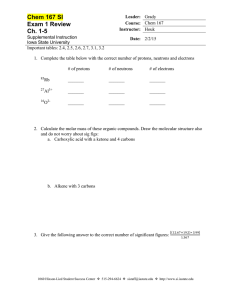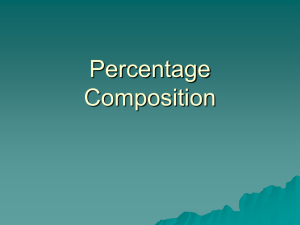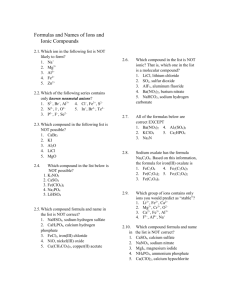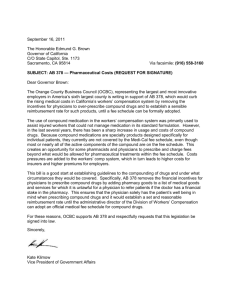Chemistry Name Chapter 2 Quantitative Problems For simple table
advertisement
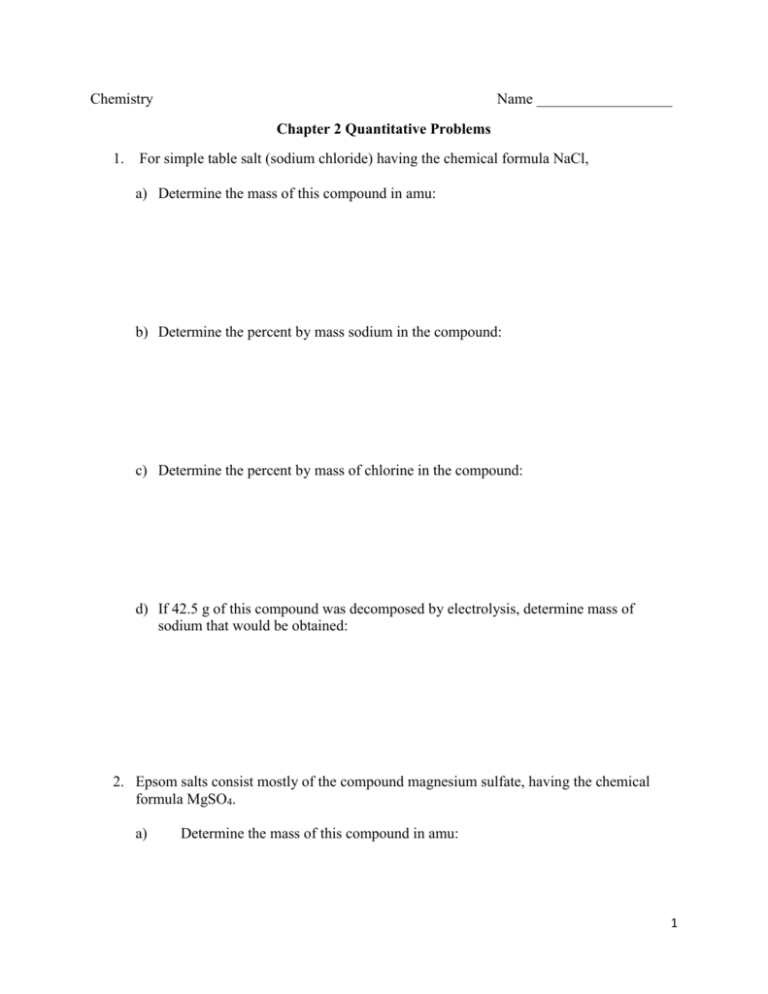
Chemistry Name __________________ Chapter 2 Quantitative Problems 1. For simple table salt (sodium chloride) having the chemical formula NaCl, a) Determine the mass of this compound in amu: b) Determine the percent by mass sodium in the compound: c) Determine the percent by mass of chlorine in the compound: d) If 42.5 g of this compound was decomposed by electrolysis, determine mass of sodium that would be obtained: 2. Epsom salts consist mostly of the compound magnesium sulfate, having the chemical formula MgSO4. a) Determine the mass of this compound in amu: 1 b) Determine the percent by mass magnesium in the compound: c) Determine the percent by mass of sulfur in the compound: d) Determine the percent by mass of oxygen in the compound: e) If 125 g of this compound was decomposed to its elements, determine mass of sulfur that would be obtained: 3. For the decomposition of sodium chloride to its elements by electrolysis, a) Write a chemical equation representing this reaction and balance it using coefficients: b) Using atomic masses of elements, show how mass is conserved in your balanced equation: c) Is this reaction an example of a physical or chemical change? Explain. 2 4. An object has a mass of 20.0 kg. Determine its a) Weight on earth: b) Mass on Jupiter: c) Weight on Jupiter: Note: Jupiter has a mass roughly 320 times that of Earth 5. You are given a mixture of sand, salt, and iron filings. Outline a flowchart that will allow you to separate all three substances. Include the basis of separation. 3



